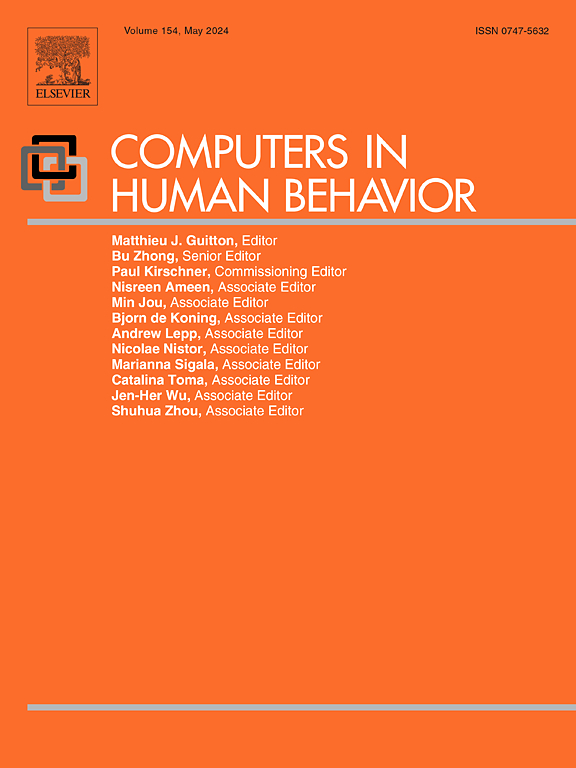Understanding the processes of trust and distrust contagion in Human–AI Teams: A qualitative approach
IF 9
1区 心理学
Q1 PSYCHOLOGY, EXPERIMENTAL
引用次数: 0
Abstract
The success of human–AI teams (HATs) requires humans to work with AI teammates in trustful ways. However, trust does not exist in a vacuum but forms through and can be influenced by interactions among teammates, leading to understudied questions about how trust or distrust can be spread within a HAT. Drawing on interviews with 36 participants who collaborated in a three-member human–AI team, we explore human perceptions of and reactions to a human or AI teammate’s (dis)trust spread about an AI teammate, and uncover the process and impact of such spread. Our findings highlight that a trustworthy (dis)trust spreader can catalyze trust contagion within a human–AI team through various social and cognitive processes. We provide one of the first empirical investigations into specific ways through which trust or distrust can be spread within HATs and people’s perceptions of such spread. We thus contribute to the effective design of AI teammates and human–AI team dynamics that foster an appropriate level of trust in future HATs.
理解人类-人工智能团队中信任和不信任传染的过程:一种定性方法
人类-人工智能团队(hat)的成功需要人类以信任的方式与人工智能团队合作。然而,信任并不存在于真空中,而是通过队友之间的互动形成并可能受到影响,这导致了关于信任或不信任如何在HAT中传播的未充分研究的问题。通过对36名三人人工智能团队参与者的采访,我们探讨了人类对人类或人工智能队友对人工智能队友(不信任)传播的看法和反应,并揭示了这种传播的过程和影响。我们的研究结果强调,值得信赖(不可信)的信任传播者可以通过各种社会和认知过程在人类-人工智能团队中催化信任传染。我们提供了第一个实证调查,通过具体的方式,信任或不信任可以在HATs中传播,以及人们对这种传播的看法。因此,我们有助于有效地设计AI队友和人类- AI团队动态,从而在未来的hat中培养适当的信任水平。
本文章由计算机程序翻译,如有差异,请以英文原文为准。
求助全文
约1分钟内获得全文
求助全文
来源期刊

Computers in Human Behavior
Multiple-
CiteScore
19.10
自引率
4.00%
发文量
381
审稿时长
40 days
期刊介绍:
Computers in Human Behavior is a scholarly journal that explores the psychological aspects of computer use. It covers original theoretical works, research reports, literature reviews, and software and book reviews. The journal examines both the use of computers in psychology, psychiatry, and related fields, and the psychological impact of computer use on individuals, groups, and society. Articles discuss topics such as professional practice, training, research, human development, learning, cognition, personality, and social interactions. It focuses on human interactions with computers, considering the computer as a medium through which human behaviors are shaped and expressed. Professionals interested in the psychological aspects of computer use will find this journal valuable, even with limited knowledge of computers.
 求助内容:
求助内容: 应助结果提醒方式:
应助结果提醒方式:


